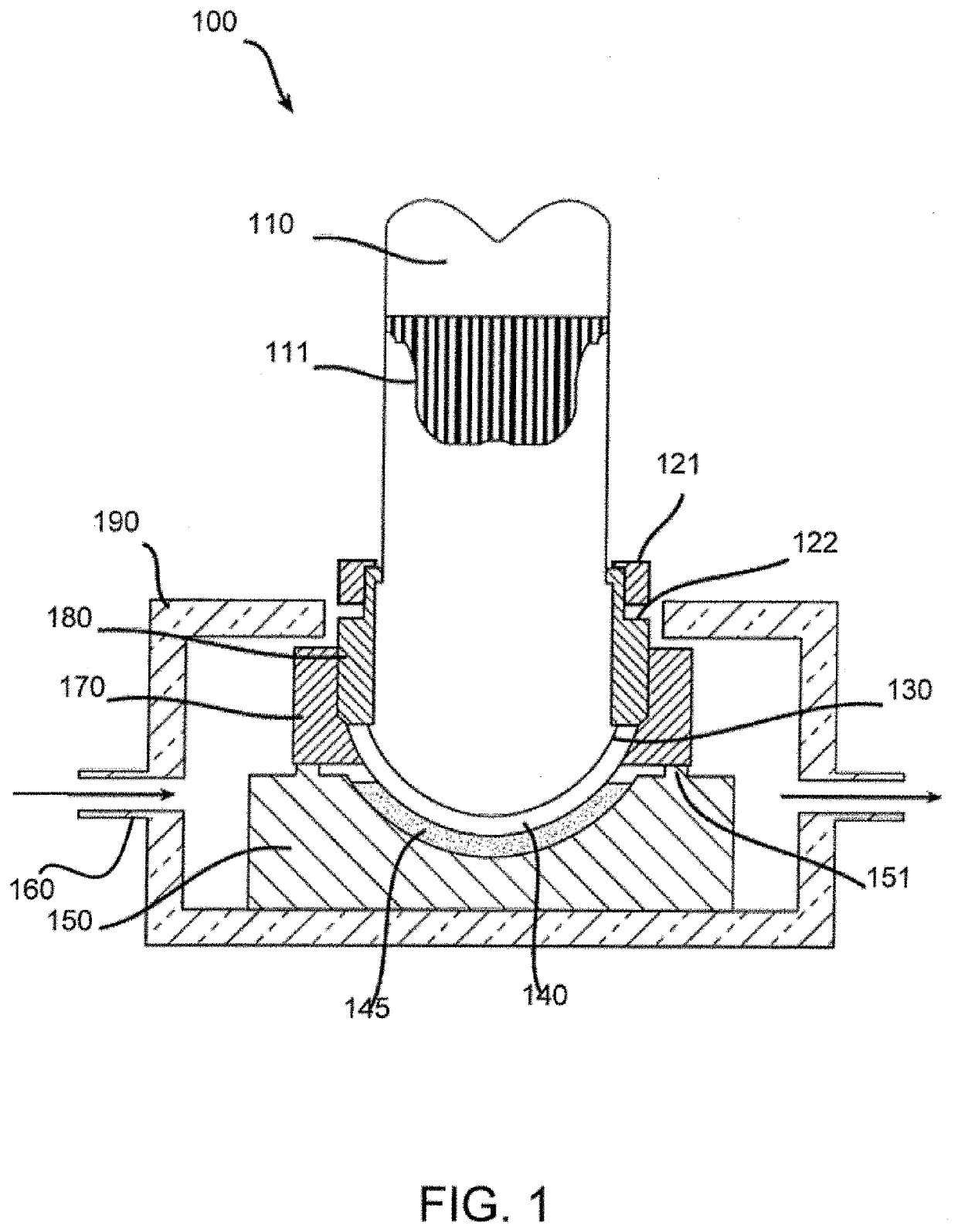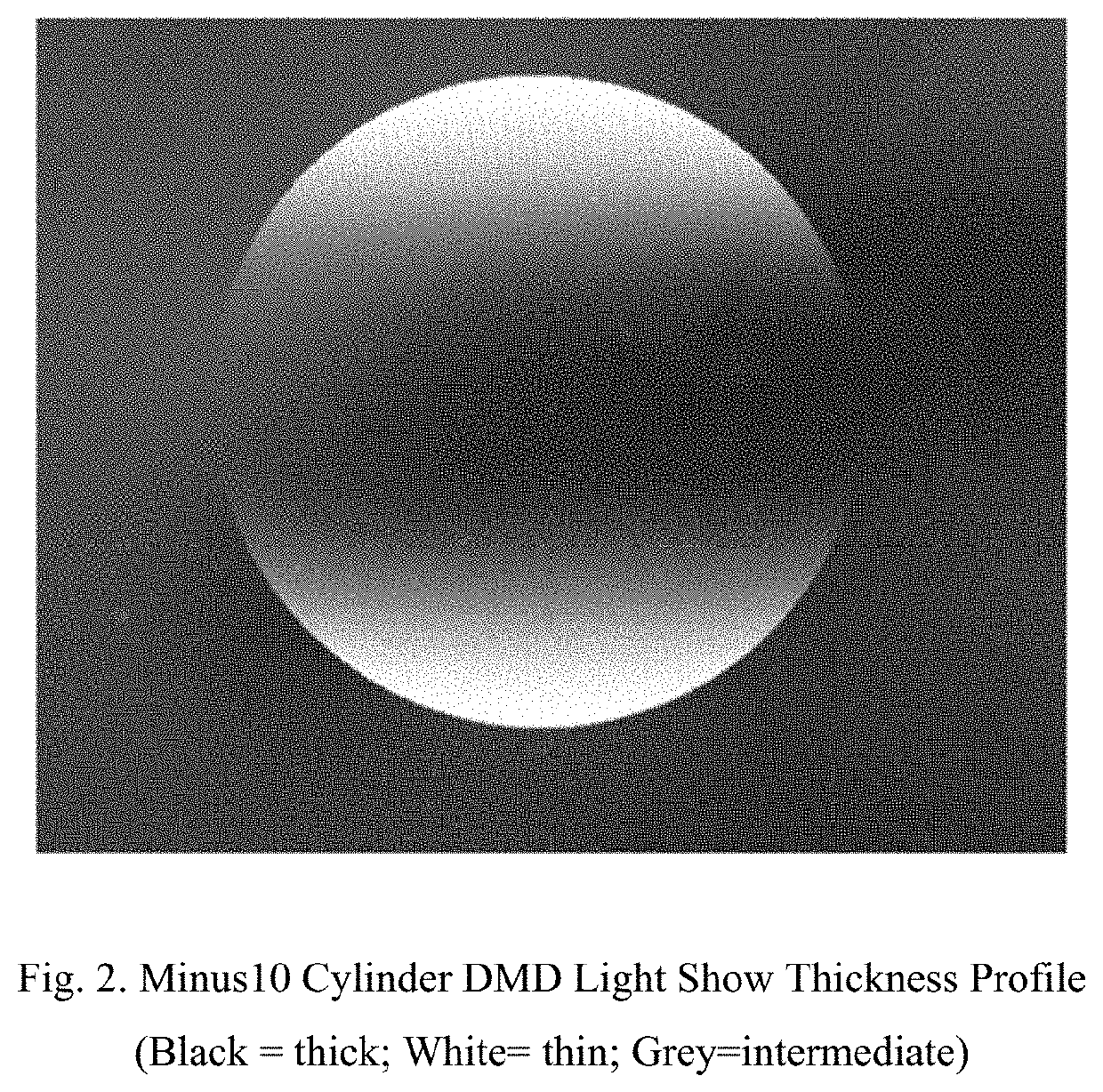Ophthalmic devices containing localized grafted networks and processes for their preparation and use
a technology of ophthalmic devices and local grafting, applied in the field of ophthalmic devices, can solve the problems of difficult production of silicone hydrogel lenses, inability to readily integrate individual components from which the final material is made,
- Summary
- Abstract
- Description
- Claims
- Application Information
AI Technical Summary
Benefits of technology
Problems solved by technology
Method used
Image
Examples
example 1
[0382]A reactive monomer mixture was formed by mixing the reactive components listed in Table 1 and then diluting that mixture with D3O such that the weight ratio of the reactive components to D3O was 75:25 (w / w). This formulation was filtered through a 3 μm filter using a stainless-steel syringe and degassed by applying vacuum (about 40 mm Hg). Contact lenses (spherical, minus one diopter), representing the crosslinked substrate network containing activatable monoacylphosphine oxide end-groups, were fabricated on a pilot plant manufacturing line as described below.
[0383]Under a nitrogen gas atmosphere and about 3 percent oxygen gas, about 73 μL of the reactive monomer mixture were dosed into the FC made of a 90:10 (w / w) blend of Z and TT. The BC made of a 90:10 (w / w) blend of Z and PP was then placed onto the FC. Pallets, each containing eight lens mold assemblies, were conveyed through a curing tunnel during which the pallets were irradiated for a total of 13 minutes at 60° C. usi...
example 2
[0385]In a separatory funnel, mPEG500 was dissolved in water and extracted three times with cyclohexane to remove inhibitor and then the water removed by rotary evaporation. A 5% (w / v) grafting solution was prepared by dissolving the purified mPEG500 in a 50:50 (v / v) solution of PG and DIW.
[0386]In a glove box, under yellow lights and taking precautions to limit exposure to white light, lenses from Example 1 were blotted dry with lint free tissue and suspended in excess grafting solution for at least 24 hours. The jar of the equilibrated lenses was transferred into the glove box containing an apparatus for voxel based lithography as shown in FIG. 1 wherein the oxygen gas concentration was less than 0.5%. The jar was opened and agitated using a shaker table for at least 2 hours to equilibrate with the low oxygen gas atmosphere.
[0387]The reservoir of the apparatus was filled with 350 microliters of grafting solution. Then, a lens was placed in the center of the reservoir, FC facing do...
PUM
| Property | Measurement | Unit |
|---|---|---|
| weight percent | aaaaa | aaaaa |
| wavelength | aaaaa | aaaaa |
| wavelength | aaaaa | aaaaa |
Abstract
Description
Claims
Application Information
 Login to View More
Login to View More - R&D
- Intellectual Property
- Life Sciences
- Materials
- Tech Scout
- Unparalleled Data Quality
- Higher Quality Content
- 60% Fewer Hallucinations
Browse by: Latest US Patents, China's latest patents, Technical Efficacy Thesaurus, Application Domain, Technology Topic, Popular Technical Reports.
© 2025 PatSnap. All rights reserved.Legal|Privacy policy|Modern Slavery Act Transparency Statement|Sitemap|About US| Contact US: help@patsnap.com



